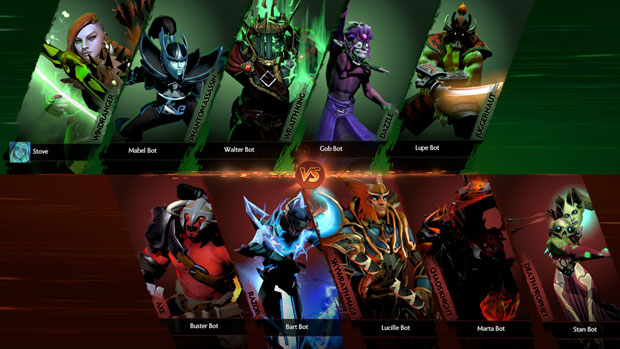 For an idea of how much Dota 2’s New Journey/7.00 update is A Big Deal, consider this: Dota, in general, has been in version 6.somethingsomething since 2005 – the Dota All-Stars mod days. It was around this time that the mysterious Icefrog originally took over development. That’s endured all the way through Valve’s Dota 2, right up until now, when all our expectations of the game’s patch number conventions crumbled like so many tango-munched trees.
For an idea of how much Dota 2’s New Journey/7.00 update is A Big Deal, consider this: Dota, in general, has been in version 6.somethingsomething since 2005 – the Dota All-Stars mod days. It was around this time that the mysterious Icefrog originally took over development. That’s endured all the way through Valve’s Dota 2, right up until now, when all our expectations of the game’s patch number conventions crumbled like so many tango-munched trees.
Moreover, the preceding patch – 6.88 – is held in unusually high esteem by both the community at large and the professional/competitive scene. Other than the questionable strength of certain illusion-spam lineups, 6.88 was remarkably well-balanced, with almost no heroes considered unviable and a relatively broad range of strategies, from drawn-out split pushing to full-davai five-man gank rushes being employed in games at all skill levels. [Don’t worry about the terminology if you’re less steeped in on Dota slang – just know that 6.88 was really versatile! – Ed]
Nonetheless, Valve – and Icefrog – have held little back for 7.00, introducing not only a new hero in Monkey King, but the kind of fundamentals-altering additions that go even further than what skipping 0.11 version numbers would suggest. Perhaps the most impactful of these changes are Talents.
Talents
The ability to put skill points into upgrading your hero’s stats when you level up is dead. Instead, you can now put those points into Heroes of the Storm-style Talent trees, which give you a choice between two permanent buffs at levels 10, 15, 20 and 25. That’s all on top of your hero’s usual spells. In effect, that means every single hero has received potentially enormous buffs.
Seriously, listen to some of these options: an extra 300 gold per minute on Puck. Vengeful Spirit’s Magic Missile piercing spell immunity. -35s respawn time on Nature’s Prophet. +6 health regen for Slardar at level 10. Level 10!
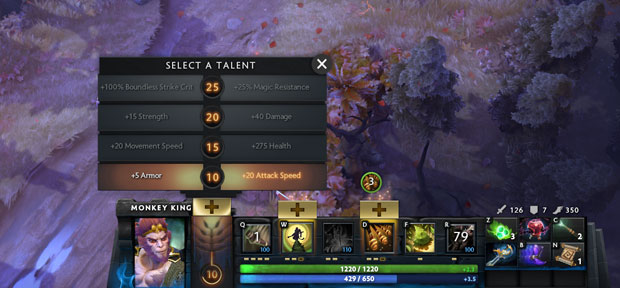
Of course, most aspects of Dota 2 sound horrific on paper before turning out to be easily counterable or ignorable in-game, and it’s worth remembering that most games end without anyone hitting level 25. Actually, many end without supports even hitting 20. It’s therefore hard to imagine that the craziest Talents (which live at the top of the Talent Tree and will only come into play in these late stages) will form the basis of initial hero picks/bans or overall strategies.
Still, they’re definitely things to aim for, and I can see supports possibly playing a bit more sacrificially in order to avoid sapping that precious XP, helping to secure their carry’s level progression.
[As a Witch Doctor main, I checked his Talent Tree and one of the level 10 choices gives you +20% XP gain, so that could help stop you falling behind while prioritising a carry in this way – Ed]
In any case, the bonuses afforded by skilling Talents look set to open up new item build possibilities, to counter enemy capabilities (or synergise with allies) and negate the weaknesses a hero may have possessed since their inception; as a perennially weak, broke Crystal Maiden player, I’m particularly excited about kitting her out with +50 attack damage and +120gpm. The uncountable extra layers of complexity and strategy that Talents add may make for huge amounts of potential, or create a huge risk in terms of overpowered heroes, but one thing’s for certain: there’s a hell of a lot more to learn now.
Monkey King
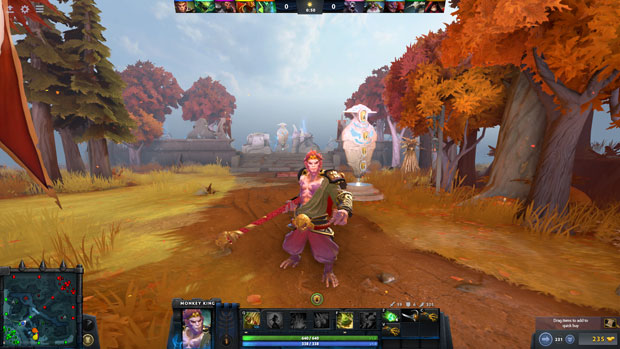
At last, we have Sun Wukong, the Monkey King: Dota 2’s first hero not to have been ported from the original Dota mod. As is often the case for newly-added heroes, he feels very strong indeed; his Q ability, Boundless Strike, is a long-range staff slam that stuns everything in a line while also adding critical physical damage based on his normal attack attack, so it can double as a devastating area of effect nuke if you build heavy-hitting items on him.
He also has an excellent escape ability in Tree Dance, which lets him jump up to and from treetops where enemies can’t see (unless they have flying vision, which Tree Dance incidentally provides for Monkey King). This also sets up Primal Spring, whereby he jumps forcefully back to the ground, damaging and slowing heroes caught in a small radius.
His passive, Jingu Mastery, adds bonus autoattack damage and lifesteal if Monkey King lands four consecutive hits on a hero. This combos nicely with his ultimate, Wukong’s Command, which creates a formation of illusions to attack anything caught in its massive area of effect – while, again, boosting Monkey King’s attack damage.
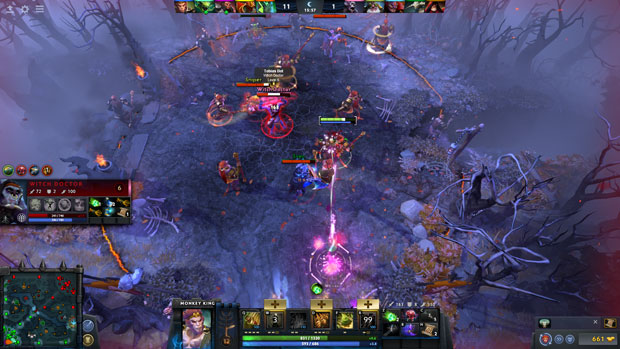
His only duff spell, in my book, is Mischief. This applies a context-sensitive disguise to help hide from pursuers – he’ll turn into a tree if you’re in a wooded patch, or a rune if you’re stood atop one of the ward spots. It will rarely fool experienced players, sadly, and even newbies must surely notice something strange about a random tango or clarity potion lying in the middle of a lane. A simple autoattack will break the disguise, anyway. [You say this, and yet after spending two years accidentally picking up abandoned iron branches thanks to one particular friend I might be a little more vulnerable to the trap… – Ed.]
Valve reckon Monkey King is a carry, which is certainly a viable way to run him, considering his obscene physical damage potential. That said, his toolkit is versatile enough to make for a decent solo offlaner, too – Boundless Strike is well-suited for halting ganks, and Tree Dance is an effective escape mechanism provided the enemy can’t get vision over trees. Be wary of Timbersaws, though: if a tree is destroyed while Monkey King is stood on it, he’ll be stunned for four whole seconds; a probable death sentence.
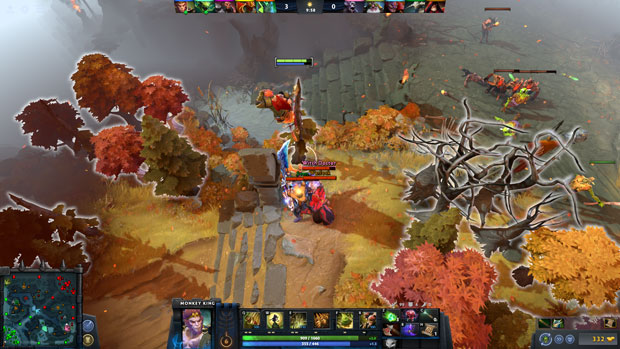
Heroes
As well as a long list of balance tweaks, 7.00 has applied major reworks to a handful of heroes. Lycan, for instance, has had a timing element added, similar to that of Night Stalker: Howl’s new damage and HP buffs will have double the effect when used at night, adding an interesting dimension in terms of when exactly he should time a push or join a fight.
Infamous lane-annoyer Necrophos, meanwhile, has had his Sadist ability replaced by Ghost Shroud. Sadist was the one which let him gain health and mana when killing units. Ghost Shroud is about slowing nearby enemies while putting Necro in an Ethereal state – so he can’t attack, and is weaker to magic damage, but will have any HP or mana replenishment effects doubled AND you get an area of effect slow which affects nearby enemies. Since Sadist boosted Necro’s survivability, this replacement with Ghost Shroud looks like Valve is prodding Necro into a more clearly-defined support role, helping his team chase down kills at the risk of being blown up by magical nukes.
Another big change is to his Aghanim’s Scepter upgrade; using Necro’s ultimate ability when you have a Scepter no longer disables buyback on the hero you killed, making it a bit less game-winning in the ultra-late game [more on the importance of buyback in our Dota 2 guide! – Ed.], but it does now reduce cooldown on said ultimate to a minimum of 25 seconds – low enough that it could be deployed twice in a single fight. Scary.
Treant Protector got a boost to his surprise-attack potential, with Nature’s Guise turning from an active ability to a passive, turning him invisible whenever he’s near a tree for a few seconds (and gaining movement speed in the process). Break that invisibility with an autoattack, and it’ll apply a decent scaling bash stun to your target. That comes at the cost of easy escapes, though; the old Nature’s Guise had a 2s invisibility fade time, while this new version takes between 3-6s to kick in, depending on your hero’s level.
Techies’ Land Mines also got completely changed, becoming Proximity Mines. Undetectable to True Sight, these will actually reveal themselves to enemy heroes who move into close range of the mines. The mines don’t trigger immediately so you have a brief window to GTFO but if you stay within that range for 1.6s, they’ll explode. Proximity Mines can’t be stacked on top of each other, but have much higher damage to compensate.
This does sound like an improvement for all involved. Techies players won’t have to stand around slowly plopping nine mines all on the same spot, while foes will have a little grace period to avoid or destroy the mine before it insta-gibs them out of nowhere, as was the case before. I’m not too keen on Blast Off, the replacement skill for Suicide Squad, Attack!, though. With that one Techies quickly dart forward before non-lethally exploding, making it harder for victims to dodge. Besides dealing huge damage, it applies a silence to anyone caught in the blast radius – the most annoying debuff in all MOBA-dom.
There are tonnes of other, lesser changes, but it would be remiss to skip a mention of Riki’s new Aghs upgrade, which allows him to hide inside an ally when casting his ultimate, attacking from within his host. Fellow Dota nerds may recognise the origins of this in a legendary Reddit shitpost; a dumb joke made to pass the time between patches, now given immortality in the game itself. Still, hitching a ride inside a speedy Bloodseeker, Windranger or Slardar while casting Tricks of the Trade on anyone nearby could be an effective, and quite literal, pocket strat.
Backpack
There’s also a new ‘backpack’ mechanic wherein you can carry an additional three items, but not use them or gain their effects. They can be swapped out with any of the items in your main inventory, but they’ll only become ‘active’ after a six second delay. It’s probably not a quick enough process to reliably switch items around mid-fight, but it is super useful for lugging around the component parts for a soon-to-be complete Upgrade item. I’ve found it’s especially useful when one of those components comes from the Secret Shop — you can just grab it and bag it while passing through, without needing to micro the courier when delivers the other parts.
General changes
Now that Talents have made XP gain much, much more important, Valve have very helpfully completely changed how experience and leveling is calculated. In short, most levels now require less XP to reach than in 6.88, and maxing out at level 25 requires less XP overall. To an extent, this is counteracted by lowered XP gains from denied creeps, but with higher, scaling payouts from things like the Tome of Knowledge item and more easily available Bounty runes (see below), expect to see core heroes level up faster, possibly leading to shorter, faster-paced games.
Root abilities have also been buffed. Root is a status effect that stops you moving but doesn’t disable you the way a stun would. Root abilities will now prevent ‘escape’ spells like Mirana’s Leap and Phoenix’s Icarus Dive from allowing them to move away. This is a great change – roots always felt like rubbish Poundland stuns, and while they’re still not sufficiently ‘hard’ disables that they break the heroes using them, it’s nice that slippery heroes can’t just brainlessly jump out of them. Speaking of which, many of the same leap/jump/dive spells no longer disjoint projectiles – how d’you like that, Slark? Jerk.
The map
Roshan has moved house again – he now resides in a new cave next to the top rune spot, right in the middle of an expanded bit of river. Hopefully this cuts out the Dire side’s advantage when it comes to claiming Rosh; previously, it was easier for them to sneak in (since they didn’t have to cross the river), and the Dire Tier 1 tower was so close it provided an easier route for teleporting heroes to join fights in and around the pit. This new placement definitely seems to level the field.
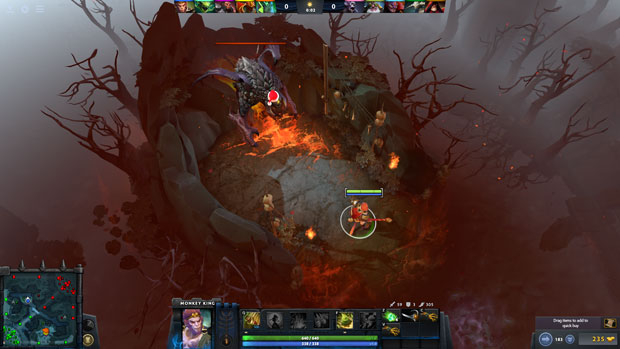
That’s not even the biggest change to the map, though. Every jungle area has been completely redesigned, with new neutral creep camp placements (and new neutral creeps), so prepare to re-learn your pull timings, plus there are Bounty rune spawn spots (ideal for risk-averse Alchemist players who don’t want to leave their side of the map) and a new building type, Shrines. These give a quick burst of health and mana regen, so you don’t necessarily have to trundle all the way back to base if you’re beaten up – another concession to faster-paced games.
HUD
The rejigged in-game HUD might be the iiffiest of 7.00’s changes; it’s tighter, cleaner and gives you better visibility of the map, but the smaller dimensions won’t be for everyone. You can increase the size of the minimap, but not other HUD elements and a lot of useful information is hidden behind presses of the Alt key. You’ll need to hold this to see your KDA, last hits and denies, and the gold required for buyback – all small figures which could have easily been included without the need for an extra keypress.
One rather brilliant change, however, is the unit query window. This pops out from the left side of the screen to show the items and, if an ally, the skill build of any hero you click. In the past, this info would obscure your own hero control panel, so the separate window is a very welcome change.
There’s also a nifty pregame screen whenever you lock in your hero at the start of a match. This gives you an extra 30 seconds to plan lane matchups, indicate likely ward placements and buy your starting items – a boon for those who tend to still be mulling over their initial purchases when the first creeps spawn. The anime-style shot of both team compositions which follows the pregame menu is an amusingly ridiculous touch, too.
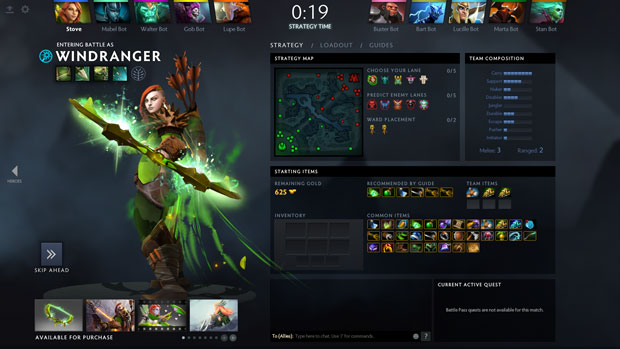
Other stuff
Following much community grumbling, Slardar and Viper have had their hideous old models replaced with higher-quality, still-ugly-but-in-a-good way reskins. Also, Enigma is hench now, for some reason.
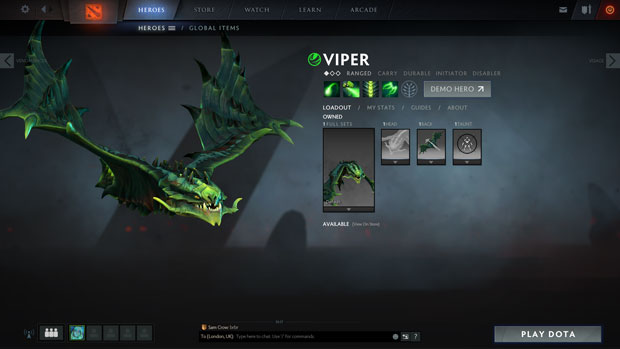
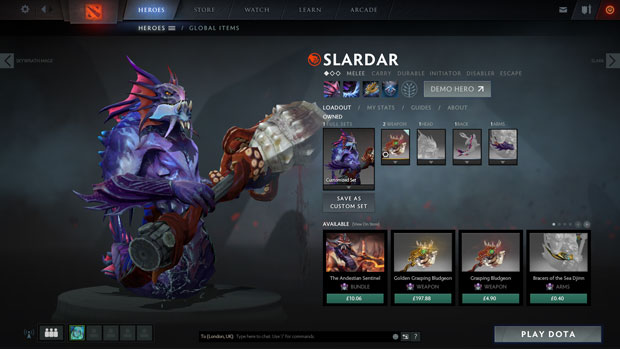
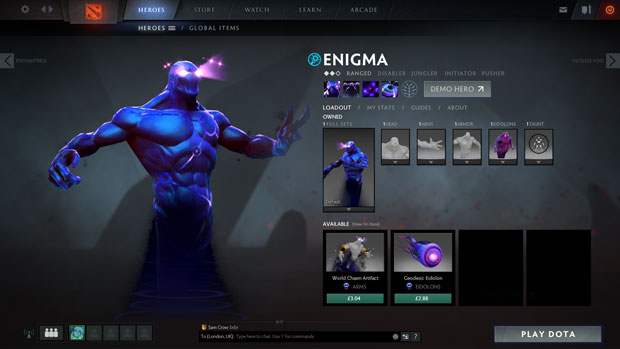
Tools for community-programmed AI bots are another happy inclusion. Valve’s own bots are, depending on difficulty level, either suicidally stupid or lethally psychic, so hopefully some clever fans can come up with something in-between.
I’m out of wordcount at this point, so:
New skybox (cool!)
Bigger trees and grass effects in showcase view (cool!)
Rod of Atos now roots instead of slows (cool, now that root doesn’t suck anymore!)
Quelling Blade and Iron Talon have a flat damage bonus instead of a percentage-based one (not cool if you’re a jungler!)
Bigger trees and grass effects in showcase view (cool!)
Rod of Atos now roots instead of slows (cool, now that root doesn’t suck anymore!)
Quelling Blade and Iron Talon have a flat damage bonus instead of a percentage-based one (not cool if you’re a jungler!)
For the many, many other minor changes, check out Valve’s 7.00 minisite.
Despite some early trepidation regarding Talents, both they and (more or less) everything else about The New Journey seem like fine additions; my experience on the main client, which received the update in the wee hours of this morning, has been spent more on buzzing with new ideas on how to play than it has with fretting over potential OP-ness. Monkey King, too, feels dynamic and multi-dimensional in way that not all Agility cores do. It’s a great patch – here’s hoping we don’t have to wait 11 years for the next one.






0 comments:
Post a Comment